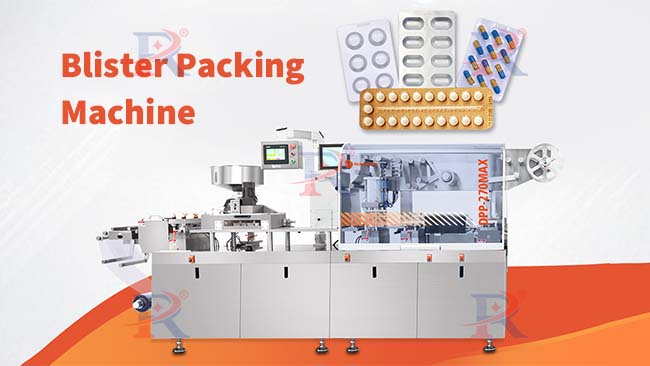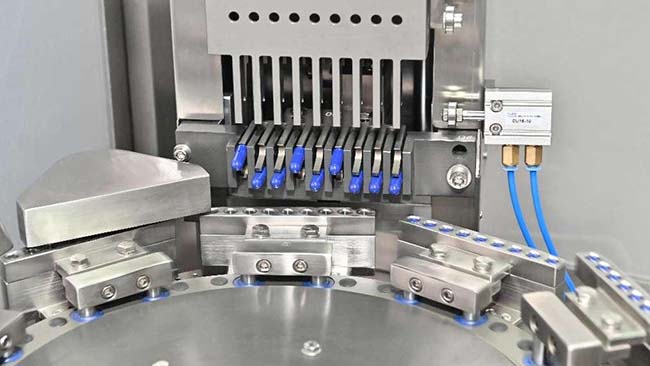Are you sourcing pharmaceutical and packaging equipment from China—such as a capsule filling machine filler, pill press tablet press machine, tablet blister packing machine? You know stakes exist: Quality affects cGMP compliance; Downtime ruins the productivity of pills and capsules, and bad support stalls medicine production. With 20-year hard-earned lessons in pharmaceutical machinery procurement, I’ve written this guide to walk you through steps of finding a dependable Chinese pharmaceutical equipment supplier and steering clear of pitfalls before purchasing capsule tablet machines.
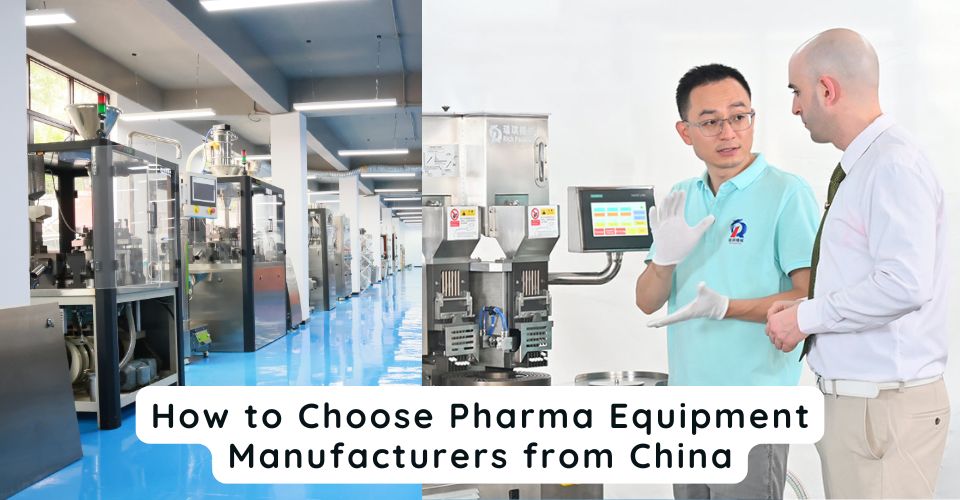
1. China’s Pharmaceutical & Packaging Equipment Industry: Scale, Challenges, and Evolution
China’s pharmaceutical industry is a global behemoth, underpinned by a vast domestic market and growing international API (Active Pharmaceutical Ingredient) exports. It is estimated over 7,000 pharmaceutical enterprises operate within the country, ranging from massive state-owned entities to medium-sized players and a large number of smaller generic drug producers, according to Annual Statistical Report issued by the National Medical Products Administration.
Supporting this massive production base is a sprawling ecosystem of pharmaceutical equipment manufacturers. Credible sources indicate over 1,000 domestic companies manufacturing various types of pharmaceutical process equipment, packaging machinery, and related systems including capsule filler filling machines, tablet presses, capsule blister pack packaging machines, box carton packing machines, vertical form fill seal machines, tablet capsule counting machines, and tablet coating machines.
The market size in China has surpassed that of Germany, making it the world’s 2nd largest manufacturer of pharmaceutical and packaging equipment. It is estimated this size will exceed 90 billion CNY (≈12.5B USD) in 2025 according to “China Pharmaceutical Packaging Equipment Industry Report, 2021”.
Several defining characteristics shape this equipment sector:
1.1 Fragmented Landscape & Concentration Challenge
The industry remains highly fragmented, dominated by numerous small and medium-sized enterprises (SMEs). It leads to significant challenges in standardization, and quality consistency. Consolidation is occurring but concentration levels still lag significantly behind mature markets like Europe or US.
1.2 Technology Advancement & Innovation Gap
There has been substantial progress in manufacturing capabilities over the past decade. Many manufacturers now produce equipment that meets basic cGMP requirements. However, a critical gap persists in cutting-edge innovation and core technology originality. Truly breakthrough innovations of core technologies especially in ultra-high-speed, complex aseptic processing remain concentrated among leading international players. Reverse engineering and adaptation of established designs are still prevalent paths for many Chinese suppliers.
1.3 Talent Pool Dynamics
The overall technical talent pool is large, reflecting China’s strong engineering education base. However, there’s a noticeable shortage of highly experienced specialists with deep expertise in advanced pharmaceutical engineering principles, cutting-edge automation especially Pharma 4.0 integration, rigorous validation protocols (IQ/OQ/PQ), and understanding complex global regulatory landscapes.
1.4 Manufacturer Ambition & Quality Trajectory
Development ambition among manufacturers is generally high. Many leading and mid-tier Chinese suppliers have been increasingly investing in advanced manufacturing facilities. Capsule pill processing and packaging machine quality is on an upward trajectory, but variability remains a concern. While top-tier Chinese manufacturers produce equipment (e.g. capsule filling machine pharmaceutical, pill presses), the performance and longevity of equipment from the long tail of smaller suppliers can be inconsistent, impacting the overall industry.
1.5 Equipment Quality Challenges
Following quality trajectory, pharmaceutical and packaging equipment manufactured in China still faces certain quality challenges compared to global benchmarks.
●Surface Finishing Deficiencies: Partial equipment exhibits coarse polishing and grinding processes, with visible burrs on stainless steel weld point, compromising cleanliness and corrosion resistance.
●Non-standardized Engineering Layout: Recurring safety hazards include disorganized conduit arrangements, improper motor heat vent design (e.g., facing dust-prone areas), and absence of sealing covers on a capsule and tablet counting machine elevate cross-contamination risks.
●Inconsistent Standard Compliance: Despite claims of cGMP adherence, critical details like radius curvature specifications and dead space-free welding are not rigorously implemented.
2. Key Risks in Sourcing Pharmaceutical Machinery from China
As global pharmaceutical manufacturers increasingly turn to Chinese suppliers for cost-effective capsule filling machine filler equipment and pill presses, systemic risks threaten to undermine decision makings. While China’s industrial capabilities have surged, due diligence remains critical to avoid operational disruption and hidden costs.
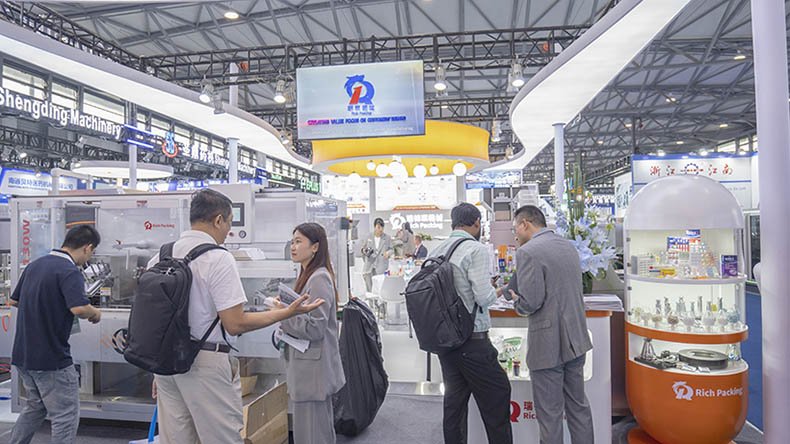
buyers selecting pharma packaging equipment from suppliers
2.1 The Mirage of Overstated Specifications
Suppliers frequently market an empty hard gelatine capsule filling machine or other equipment with exaggerated performance parameters unsupported by real-world conditions. Common misrepresentations include:
●Inflated Output Claims: A capsule powder filling machine advertised at 150,000 capsules per hour may operate only at 60% capacity due to material handling limitations.
●Theoretical vs Actual Compression Force: Pill tablet presses boasting 150kN main compression force often sustain significantly lower forces during high-speed tablet pressing, causing poor compaction especially for large-diameter effervescent tablets.
●Unvalidated Adaptability: A small capsule filling machine marketed as “versatile” fails under specific formulations such as size 5 capsule filling.
Due to overstated advertising, consequences may be desperate: Pill and capsule packaging bottlenecks, unqualified capsule tablet batch rejection, and failure to reach projected capsule tablet candy counting output.
2.2 The False Philosophy of Cost-Driven Engineering
Many pharmaceutical equipment suppliers in China prioritize low upfront machine cost that result in engineering compromises:
●Structural Deficiencies: For example, underspecifying stainless steel thickness in pill press tablet press machine frames or using substandard alloys in a blister cartoning machine accelerates hardware fatigue, risking equipment damage.
●Critical Design Flaws: For instance, the non-integrated cam housing in a tablet blister packing machine induces vibration and noise. Poorly engineered tablet press turret retention systems allow dies to fly off at high speeds.
●Compromising Welding Process: Spot welding instead of full-penetration welds on load-bearing joints compromises longevity of a gel capsule filling machine. Skipping stress-relieving heat treatment on gears or shafts leads to microfractures.
Prioritizing low cost while skipping machine performance will cause unscheduled downtime, safety incidents, and total cost of ownership exceeding premium alternatives.
2.3 Documentation Void
Incomplete user manuals, either poorly computer-translated or entirely absent, are common among Chinese pharmaceutical equipment suppliers. The absence of usable documentation cripples operational readiness:
●User manuals of a semi auto capsule filling machine or capsule blister packing machine are often poorly translated, technically ambiguous, or omit critical safety procedures.
●Lack of video guidance complicates operator training, increasing error rates of capsule powder filling and tablet pressing.
●No digitally accessible maintenance logs or troubleshooting trees hinder technical autonomy.
2.4 The Phantom After-Sales Support
A large number of pharmaceutical packaging machinery suppliers in China focus on the lucrative sales while their support and service frequently vanish after deals:
●Technical Support Abandonment: On-site commissioning is cursory; operational or cleaning protocol training is nonexistent. Remote support is unresponsive.
●Spare Parts Desert: Essential wear parts, such as lab tablet press machine dies, ejector pins of an encapsulation machine capsule filling, and tablet counting machine automatic infrared sensors, have no local inventory, forcing 4-week lead time.
●Delayed Response: “24/7 support” pledge turns into 72+ hour service delays if powder leak occurs in a double loader capsule filling machine, exacerbating gelatin capsule production losses.
2.5 Fraudulent Substitution of Core Components
It is not rarely seen in China that pharma processing equipment producers fraudulently substitute core components, and critical software features are missing.
●Key Parts: Servo motors, frequency converters, etc. in a tablet counter counting machine produced by globally renowned brands such as Siemens or Schneider are replaced with unknown domestic brands.
●Critical Molds: Punches and dies of a tablet press pill press machine contain electroplating; tooling in contact with drug tablets should be made of stainless steel 316L while it is actually replaced with standard steel 304.
●Software Defect: The control system lacks an Audit Trail function, failing to meet 21 CFR Part 11 requirements.
3. Navigate Pitfalls & Wisely Select Pharmaceutical Machinery from Chinese Suppliers
While acknowledging the above risks, the key to success lies in navigating these pitfalls. As global pharmaceutical supply chains increasingly integrate Chinese manufacturing capabilities, selecting reliable packaging and processing equipment demands meticulous due diligence.
3.1 Factory Audits Beyond Surface Checks: Critical Role of 6S Compliance
Execute unannounced inspection with no prior appointment and focus on assembly workshop cleanliness level, welding process quality, and QC equipment. Superficial factory inspections are insufficient. Move beyond photo reviews by demanding live virtual or even on-site workshop tours to rigorously assess:
●Spatial Logic & Workflow Efficiency
○Scrutinize material flow paths between key zones such as injection molding, CNC machining, and equipment component assembly.
○Red flag: Congested or even backtracking material workflows indicate poor lean management and 6S violations.
●Electrical Safety & Wiring Standards
Inspect cable routing for exposed live wires (>50V) or non-compliant temporary fixes such as dangling PVC pipes, and ungrounded metal conduits. Compliance requires that conduits are firmly anchored with IEC certified enclosures, and strain relief glands are on all movable machine connections.
The actionable next step is to commission third-party audits (e.g., SGS/TÜV) to specifically verify ISO 14644-1 compliance for cleanroom conditions of ingredient-contact part handling zones, and validate dust containment efficiency through standardized testing.
3.2 Checking Bill of Materials (BOM) Authenticity
To verify BOM authenticity, cross-reference supplier documentation including certificates of analysis and material certifications against actual components, and validate traceability via unique serial numbers or batch codes.
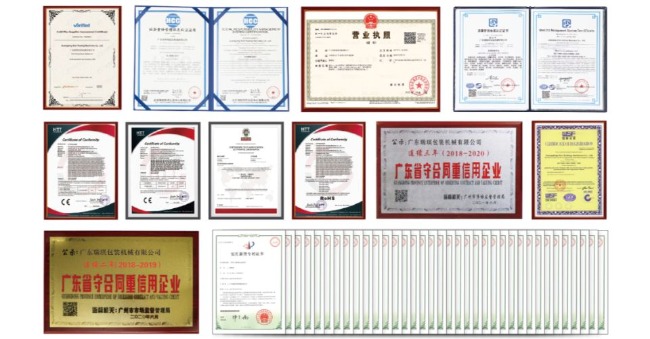
●Key Components: Check whether key parts of a pill tablet press machine or a pill blister packing machine comprising servo motors, PLC systems, inverters, contactors, and circuit breakers are produced by well-noted, reliable brands or not.
●Drive Systems: Require motor nameplate photos showing Siemens/Baldor part numbers.
●Cam Mechanisms: Insist on exploded diagrams distinguishing between integrated CAM-driven systems versus pneumatic substitutes. The latter increases particulate contamination risk.
●Contact Materials: Verify mill certificates for pill machine tablet press turrets confirming 316L stainless steel, for 304 stainless steel corrodes with acidic APIs.
3.3 Client Portfolio Scrutiny
To rigorously assess the credibility of a gel capsule filling machine or gummy bear soft candy counting machine supplier, scrutinize its client portfolios through documented evidence and partnership verification.
●Client Case Validation: Request machine procurement contracts with pricing redacted from 3 similar pharmaceutical makers and conduct follow-up phone verification. Some automatic tablet counting machine manufacturers list “Fortune 500 clients” without concrete context. You should probe deeper:
○Request capsule and tablet counting machine project references with contactable plant engineers.
○Verify tablet counter counting machine uptime metrics through third-party validators.
●Red Flag: If a pharma machine supplier lacks partnership with reputable pharmaceutical or food manufacturers, it suggests limited international recognition of this supplier.
For example, the anti-blockage candy counting gummy filling line and pill blister medicine packing machine of Ruida Packing gained the trust of US Pharma, Robinson Pharma, and other globally noted pharmaceutical producers, proving its excellent equipment prowess and expansive international service footprint.
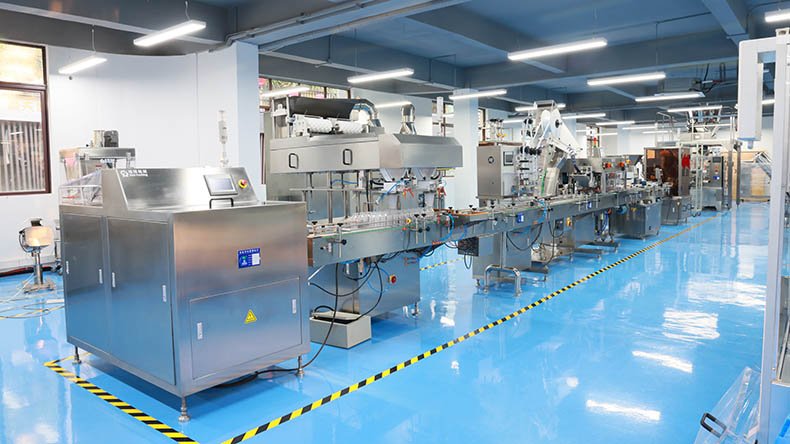
a gummy candy counting bottling line at Ruida Packing’s workshop
3.4 Securing On-Time Delivery
Proactively manage delivery risks by enforcing strict validation of njp 1200 capsule filling machine suppliers’ inventory availability, binding milestone deadlines for custom builds, and pre-vetted logistics to prevent delays.
●Inventory Verification for Equipment: Demand verified, timestamped warehouse stock reports including photographic evidence for a standard herbal capsule filling machine, pill maker tablet press machine, or a counting bottling line before order placement to confirm immediate machinery availability and avoid false stock claims.
●Customization Lead Time Management: For a customized blister cartoning packing machine exceeding an 8-week lead time, you need to enforce milestone-based penalty clauses tied to critical stages inclusive of design approval completion, factory acceptance and testing sign-off, and shipping documentation release.
●Logistics Partner Evaluation: Require pre-approval of the supplier’s logistics partners; mandate established providers like Sinotrans for inland transport and DHL Global Forwarding for air freight, and validate their track record for pharmaceutical shipments.
●Enforceable Delay Penalties: Stipulate 3% penalties of the order value per day for delays directly impacting regulatory submission deadlines, explicitly capped at a maximum 15% of the total contract value.
3.5 Technical Documentation Vetting
Scrutinize all documents to mitigate operational risks and ensure regulatory compliance. Key actions include:
●Voltage Specifications: Require motors with dual 50/60Hz certifications (e.g., CE/UL) to prevent burnout during international voltage fluctuations.
●Language Accuracy: Commission native-speaking engineers to audit user manuals, specifically targeting ambiguous translations of technical or regulatory terminology.
●Video Guidance: Verify video tutorials that guide you through the step-by-step lockout-tagout (LOTO) and disassembly-installation procedures of a pill tablet blister packing machine or tablet counting and filling machine are compliant with local regulatory requirements.
●Checkpoints: Demand Factory Acceptance Test (FAT) protocols listing all test parameters, acceptance criteria, and alignment with purchase order specifications for audit readiness.
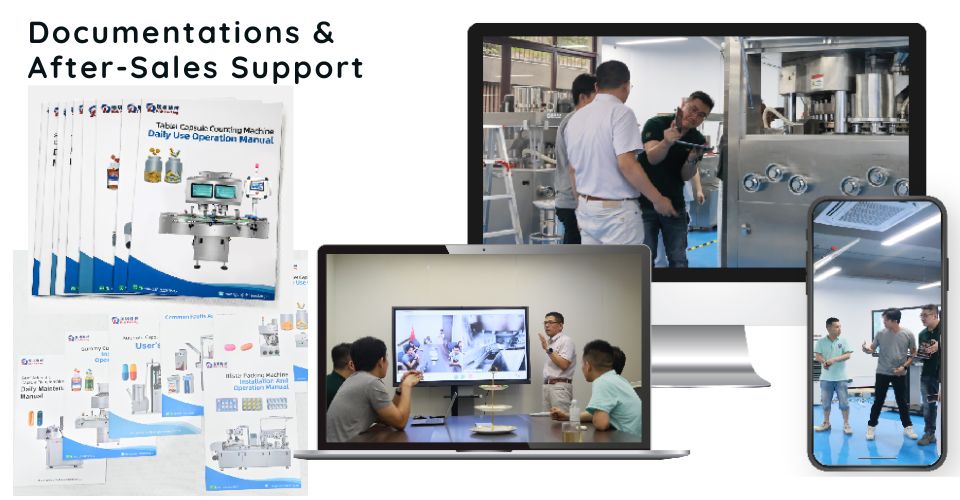
3.6 Global Support Capability Assessment
Dependable pharmaceutical processing equipment suppliers guarantee ≤48-hour response Service Level Agreement. When you need to evaluate pharmaceutical equipment suppliers’ global technical support capacity for gaining timely technical commissioning support, conduct the validations:
●On-Site Technician Mobility: Require copies of technicians’ passport visa pages showing recent Schengen/US entry stamps to confirm cross-border deployment capability.
●Personnel Legitimacy & Commitment: Validate social security/tax records to verify full-time employment status of the supplier’s technicians and engineers, reducing subcontractor dependency risks.
●Regional Spare Parts Accessibility: Review real-time inventory maps of regional hubs (e.g., Rotterdam warehouse coverage for EMEA) for critical component availability and fast delivery.
3.7 Exhibition Analysis: Evaluating Supplier Credentials Through Strategic Expo Participation
For pharmaceutical and packaging equipment buyers, a supplier’s exhibition presence serves as a critical proxy for its market stature and technical capability. Suppliers dominating central halls at tier-1 events typically possess stronger financial stability, and validated innovation pipelines.
Prioritize suppliers consistently securing premium placements at tier-1 global events such as Interpack (Core Pharma Packaging Zone: Hall 4), and CPhI Worldwide (Hall 1). In addition, cross-validate with tier-2 regional exhibitions including P-MEC China (API Machinery Cluster: Hall W5), and Arab Health (High-Trust Cohort: German Pavilion).
●Booth Positioning Intelligence: Centrality = Credibility
○Corner/remote booths indicate limited commercial influence or R&D investment.
○Demand suppliers provide exhibition floor plans highlighting proximity to keynote stages, or booths of market-leading competitors like BOSCH, and IMA. For example, a supplier adjacent to GEA Group at Interpack signals comparable technical recognition. For another instance, with a booth located at Hall N1 at CPhI Expo 2025, Ruida Packing has shown its overall machinery manufacturing prowess, displaying its quality pill and capsule processing machines and tablet capsule packaging lines alongside a number of prominent pharmaceutical packaging equipment manufacturers.

Ruida Packing at CPhI Expo 2025
3.8 Talent Pool Verification: Securing Technical Expertise for Pharma Equipment Suppliers
To mitigate equipment operational risks, validate the technical capabilities of your supplier’s engineering team. Implement the following verification protocols:
●Demand Documented Proof of Core Competencies
Require detailed CVs for assigned engineers, explicitly verifying:
○≥5 years’ hands-on experience in capsule filling line maintenance/optimization.
○TÜV-certified training in pharmaceutical automation systems.
○Language proficiency: IELTS 6.5+ or equivalent technical communication certification critical for interpreting cGMP documentation.
●Conduct Real-Time Technical Simulations
Validate problem-solving skills through live video communication, such as simulating a servo motor failure during high-speed counting of capsules and tablets. Perform immediate diagnostic steps such as the pill counting machine encoder feedback check, and tablet pill press torque fluctuation analysis, and review the response from a supplier’s technical team.
Derniers mots
In summary, China’s pharmaceutical and packaging equipment industry is massive, dynamic, and rapidly evolving. While fragmentation and gaps in core innovation and top-tier talent persist, strong manufacturer ambition, and continuous quality improvements are driving a clear upward trajectory.
For Chinese pharma equipment industry, closing the innovation gap and further standardizing quality across the vast supplier base are the critical next steps for sustained global competitiveness. For cross-boarder buyers, to sustainably mitigate supplier risks, implement globally validated verification protocols that include forensic factory audits, talent stack checking, and compliance lifecycle tracking, ensuring zero-tolerance for production deviations in pill medicine making or capsule pill packaging.
